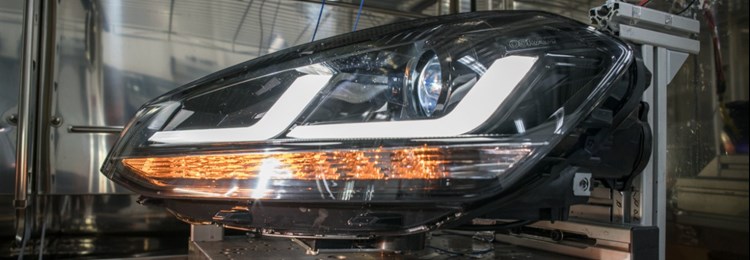
Has price replaced safety in the aftermarket?
Date: Tuesday 20 February 2024
Ring, a premium quality automotive lighting and auto electrics supplier, has a state of the art lighting laboratory located at its headquarters in Leeds, UK, and while testing a range of bulbs in the industry has found worrying results, including bulbs that are not road legal.
The laboratory team does not only test Ring and OSRAM’s own products, but also products from other automotive lighting companies to see how the quality compares and if it meets the legal standards. Recently, the company has found some worrying trends that there are bulbs being sold in the UK that are not compliant with current legislation and are therefore, not road legal.
Vehicle bulbs used on the exterior of a vehicle have to comply to ECE Regulation 37 that details exact specifications such as: light output, minimum and maximum levels, so drivers can see safely, and other road users are not dazzled. Filament geometry makes sure the light is directed on the road exactly where it is needed. Voltage, so it is suitable to work in particular vehicles and wattage, so that brightness levels are safe and doesn’t damage wiring. These regulations are in place to ensure that road users are safe. It is illegal to fit light assemblies that carry their own performance approval numbers with bulbs that are not E approved (1989 Road Vehicle Lighting Regulations). In addition, it is also illegal to stock or offer these bulbs for sale in the UK (Filament Lamps for Vehicles (Safety) Regulation 1982). Both sections of legislation are in keeping with the UN ECE Regulations on Lamps and Reflectors, which are updated regularly.
When testing bulbs in the lab, the team use multiple bulbs of the same type from the same brand, to ensure their performance or any issues that occur, are constant, and not just a one off.
Included in the testing were bulbs supplied by one company which all exceeded the maximum wattage and lumens levels by a considerable margin, another was more than 26% above maximum lumen output, and the wattage was 49% above maximum. At this level, the bulbs could cause overheating to a vehicle‘s wiring.
In another instance, one of the bulbs was switched on and, after only a few minutes, the chrome end cap showed signs of deterioration. There were also many incidents of bulbs not complying with ECE Regulation 37, non-conformity which makes the bulb not road legal.
Ring also conducts photometry tests, and from one bulb supplier, all of the bulbs failed because the level was too low – 29.1 lumens versus a minimum limit of 40. For another, four of the ten samples failed photometry on the 5W filament, which was too high. In other instances, bulbs didn’t meet the amber colour requirement, and many had a poor beam pattern, which will directly impact the drivers view of the road.
Managing Director at Ring Automotive, a subsidiary of ams-OSRAM, Andy Gratton, commented: “We regularly test ranges of halogen and auxiliary bulbs sold in the automotive industry. As a market leading manufacturer, we have a responsibility to the aftermarket to ensure that distributors and technicians are clear and confident that the bulbs they sell, and subsequently fit to consumers vehicles, are safe, compliant and produced to the highest quality standards. These are safety critical products and, as such, regulation compliance is not optional.
“We tested a number of recognised brands and these results revealed that some bulbs sold are not road legal in relation to Regulation 37 of the ECE standard. There is an increasing awareness amongst road users of the impact of poor quality vehicle lighting and our objective is to continue to raise awareness of the causes of issues, such as low visibility and, at the opposite end of the spectrum, glare.
“We also need to consider the wider impact this issue has on the independent automotive aftermarket. Organisations, such as the IAAF, have spent many years working with motor factors and garages to build trust amongst motorists to have their repairs done in the aftermarket, rather than at a main dealer. If motor factors and technicians are selling and/or fitting non-compliant products and are unaware, they risk undermining some of the work done should a road user be penalised for non-compliant lighting in the event of an incident.
“The problem then snowballs, as the garage may the blame the supplying motor factor, the factor in turn, blames the manufacturer that, quite rightly, should be held accountable, but ultimately, it’s the industry that’s negatively impacted from these poor manufacturing processes and lack of quality control. In the end, we all have a responsibility for ensuring that the road user is safe.
“Our findings identified through testing at our quality facilities in the UK and Germany represent a real challenge for the independent automotive aftermarket. Whilst bulbs are low cost relative to other ‘hard parts’, they remain a safety critical component of a vehicle and should be considered as such. There really is no excuse, given the relative cost, for road users to be subjected to a non-compliant product. We remain committed to improving road user safety in the UK and will ensure that the issues identified follow the correct reporting procedure.”
